All photographs are mine and were taken with permission on 20 February 2020.
Three years ago this week, for one week only and for the first time in over four centuries, all of the surviving tapestries designed by Raphael were hung in the Sistine Chapel for which they were planned. An extraordinary occasion which was intended to open the year of exhibitions which were to commemorate the five hundredth year since Raphael’s death.
The rehanging of the Sistine tapestries commissioned by Leo X of the Medici family wasn’t publicised far in advance, and the decision to do it in February was to ensure smaller crowds to minimise the risk of damage to the vulnerable tapestries.
I visited a few times that week, not with clients who were already very understandably (and it transpired wisely) cancelling trips amid growing uncertainty over the sporadic news of a respiratory virus emerging from China, but with friends. All of us were eager to take advantage of this once-in-many-many-lifetimes occasion. Of these visits the most notable was an invitation I received from Jill Alexy to join her small group on an after-hours visit.
The tapestries were woven to designs commissioned from Raphael by Pope Leo X a year or two after his accession to the throne of St Peter in 1513. They were intended to complete (and compete with) the ceiling painted by Michelangelo in the Cappella Magna for Leo’s predecessor and nemesis Julius II.
The ceiling had been completed seven months before the death of Pope Julius, itself an addition to the wall decorations of Perugino, Botticelli and company which had been commissioned by the chapel’s builder, Julius’ uncle, Pope Sixtus IV. If Sixtus’ and Julius’ decorations sought to emphasise the fortunes of their family, the della Rovere (two popes in twenty years was, after all, a pretty impressive achievement), then Leo’s completion of the decorations was a dramatic exercise in Medici bling.
The Medici crest is ubiquitous, hammering home the point. Incidental decorations such as the priapic fauns below are indicative of exactly the sort of thing that was making Martin Luther, beginning the Reformation as the tapestries were being woven, so very cross. And Luther knew nothing of the Bacchanalian motifs planned for the Pope’s private chapel, can you imagine what he’d have made of those?
The tapestries were woven following Raphael’s designs at the workshop of Pieter van Aelst in Brussels. Tapestry was a medium then flourishing in northern Europe. In the first instance tapestries offered protection against chill winds gusting through poorly insulated castles, and northern Europe is extremely draughty. Leo X was little concerned with insulation, his tapestries were to be woven with the finest wool and silks dyed with vibrant pigments, and with threads spun from silver and gold. Unlike fresco (and like the glittering gold of mosaic), tapestries were of significant intrinsic value. We can consider that of the three thousand ducats Michelangelo received as the total budget for the ceiling of the chapel, he spent only twenty-five on pigments while each of the tapestries commissioned (there were possibly originally sixteen) are described as costing two thousand ducats.
Sadly Raphael never saw the tapestries hung in the chapel, he died the year before their completion and delivery to Rome. Today ten tapestries telling stories of the lives of Saints Peter and Paul survive, their exact original locations uncertain. The others have fallen victim to the vicissitudes of time. Some were burned to retrieve their precious metal content during the Sack of Rome, only six years after their completion.
On that curious week in 2020, impending instability in the air, the tapestries glittered, entirely changing the space of the chapel which I have visited thousands of times in the past twenty and more years. The museum guard who accompanied us is my near contemporary, part of a cohort of new recruits who began work about the time I first started giving tours in 2001. As we walked in he stopped dead. Mi viene la pelle d’oca, it gives me goosebumps, he said. For the first time in twenty years of nods and buongiornos I saw a Vatican guard dazzled. And it was dazzling, gleaming and glorious for one week only.
Where to see the Raphel tapestries:
After their return to the Chapel the tapestries were returned to the Pinacoteca Vaticana three hundred metres away where in the interim a new lighting system had been installed. They look splendid there too, and I highly recommend a visit if going to the Vatican Museums.
Raphael’s “cartoons”, the preparatory paintings from which the tapestries were woven are part of the Royal Collection and are on permanent loan to the Victoria & Albert Museum in London.



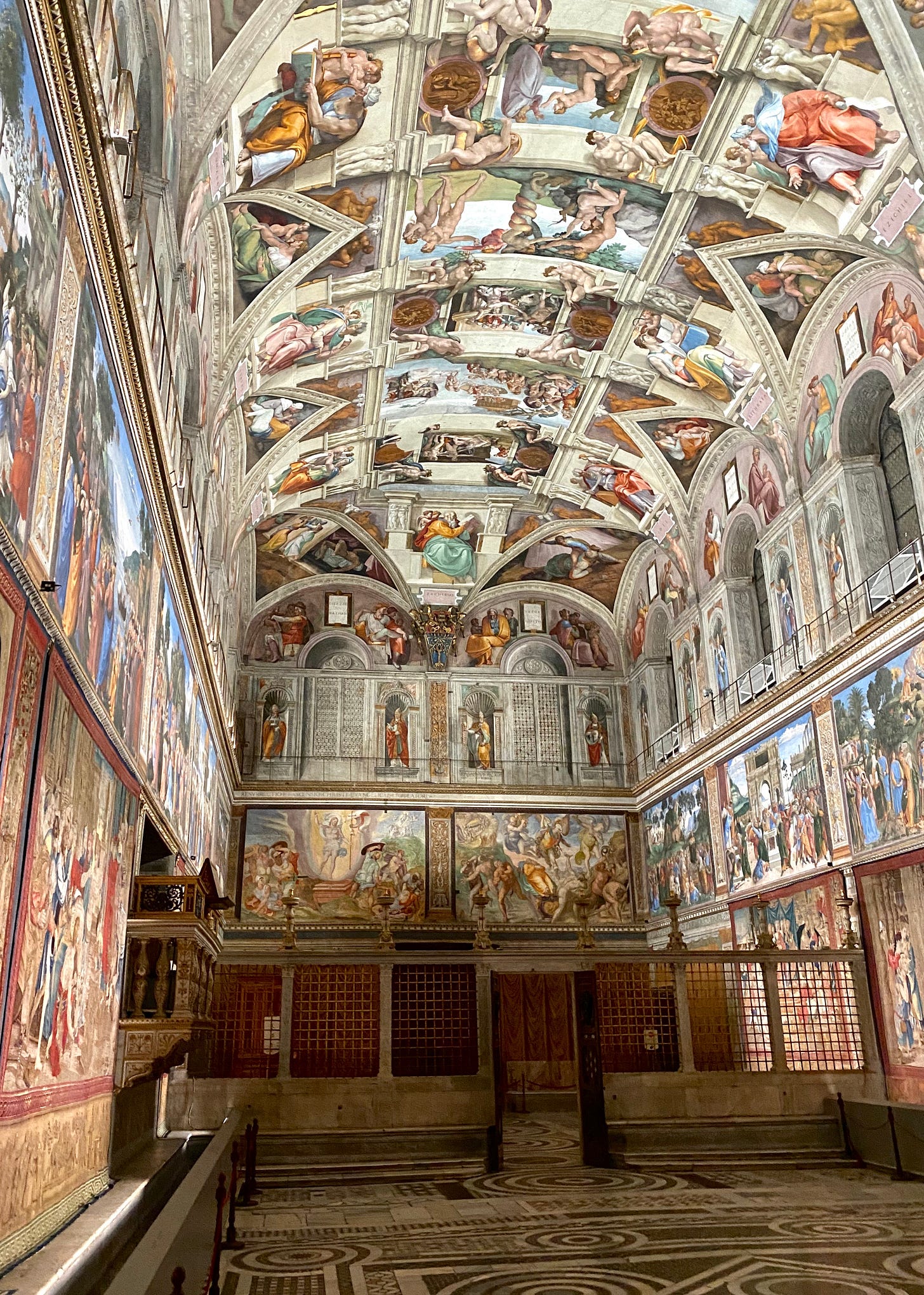

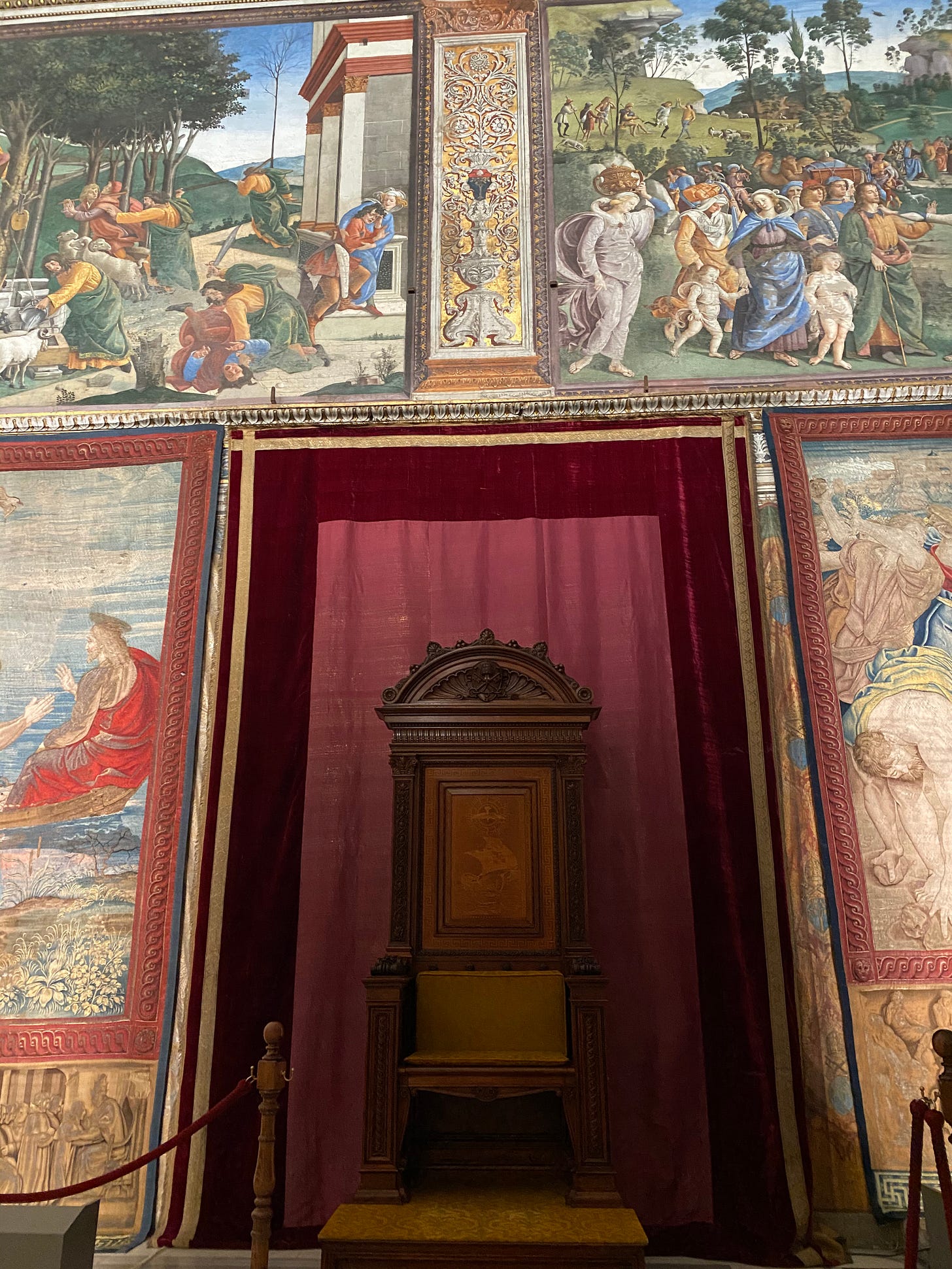
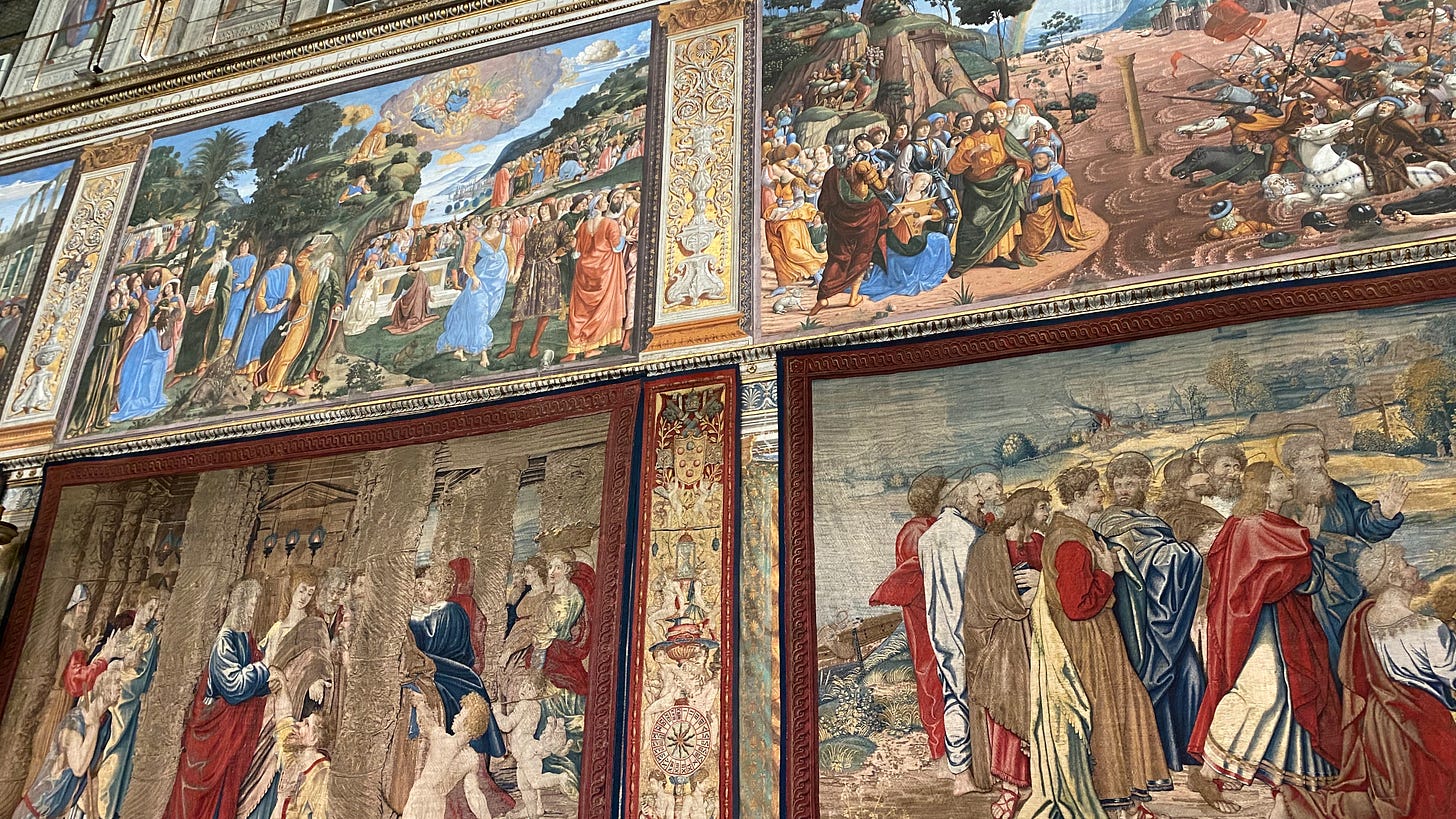
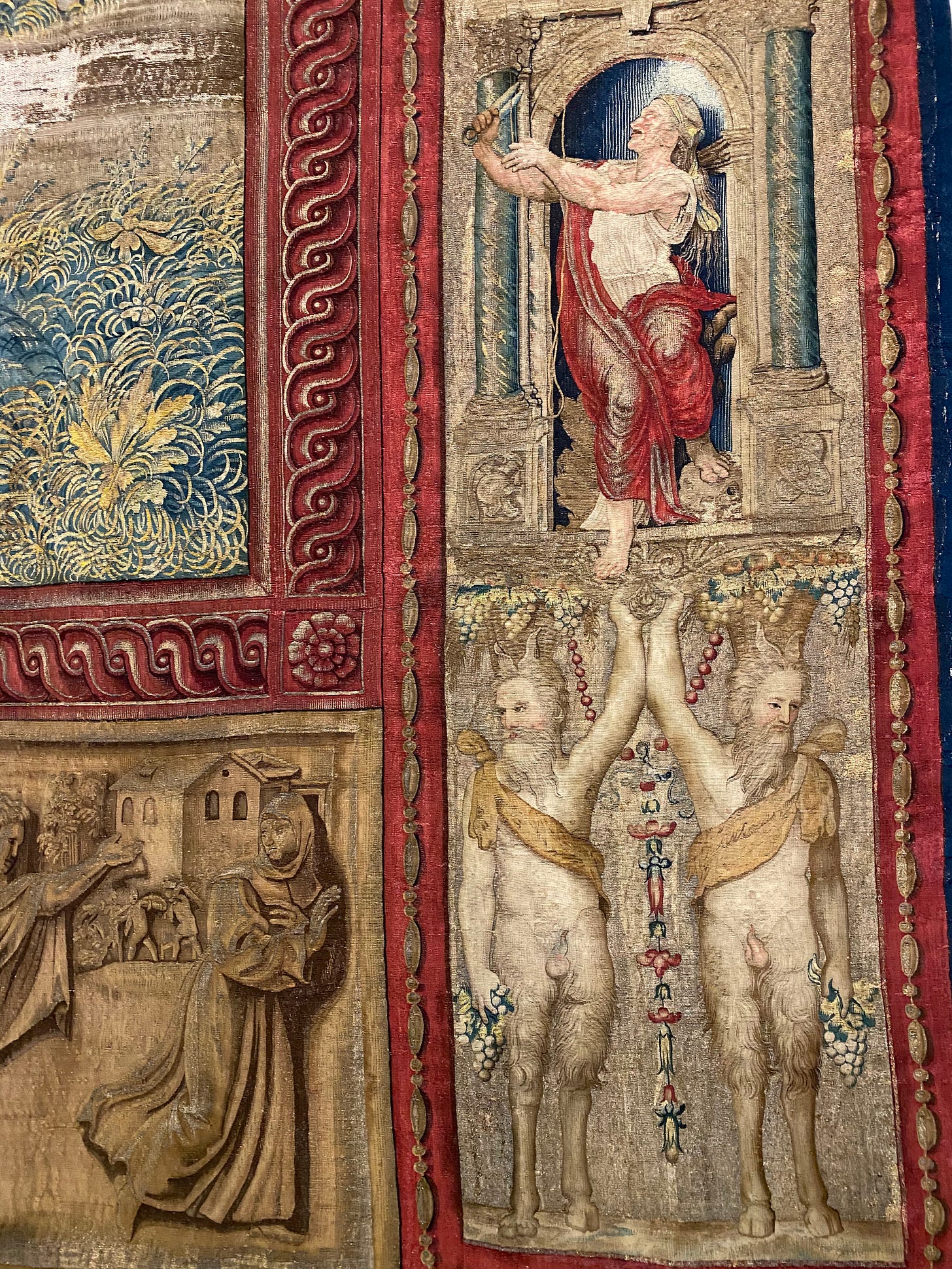
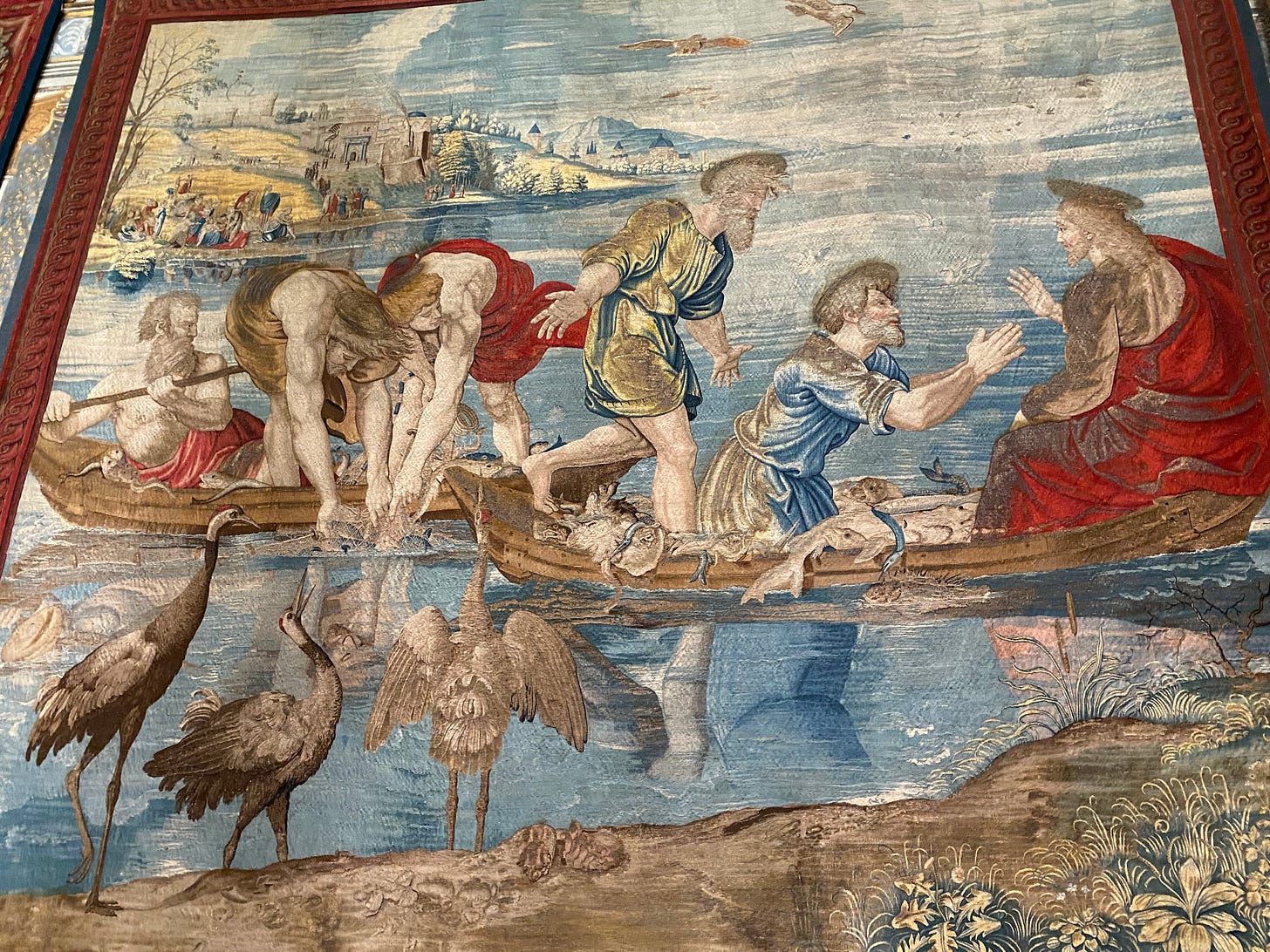
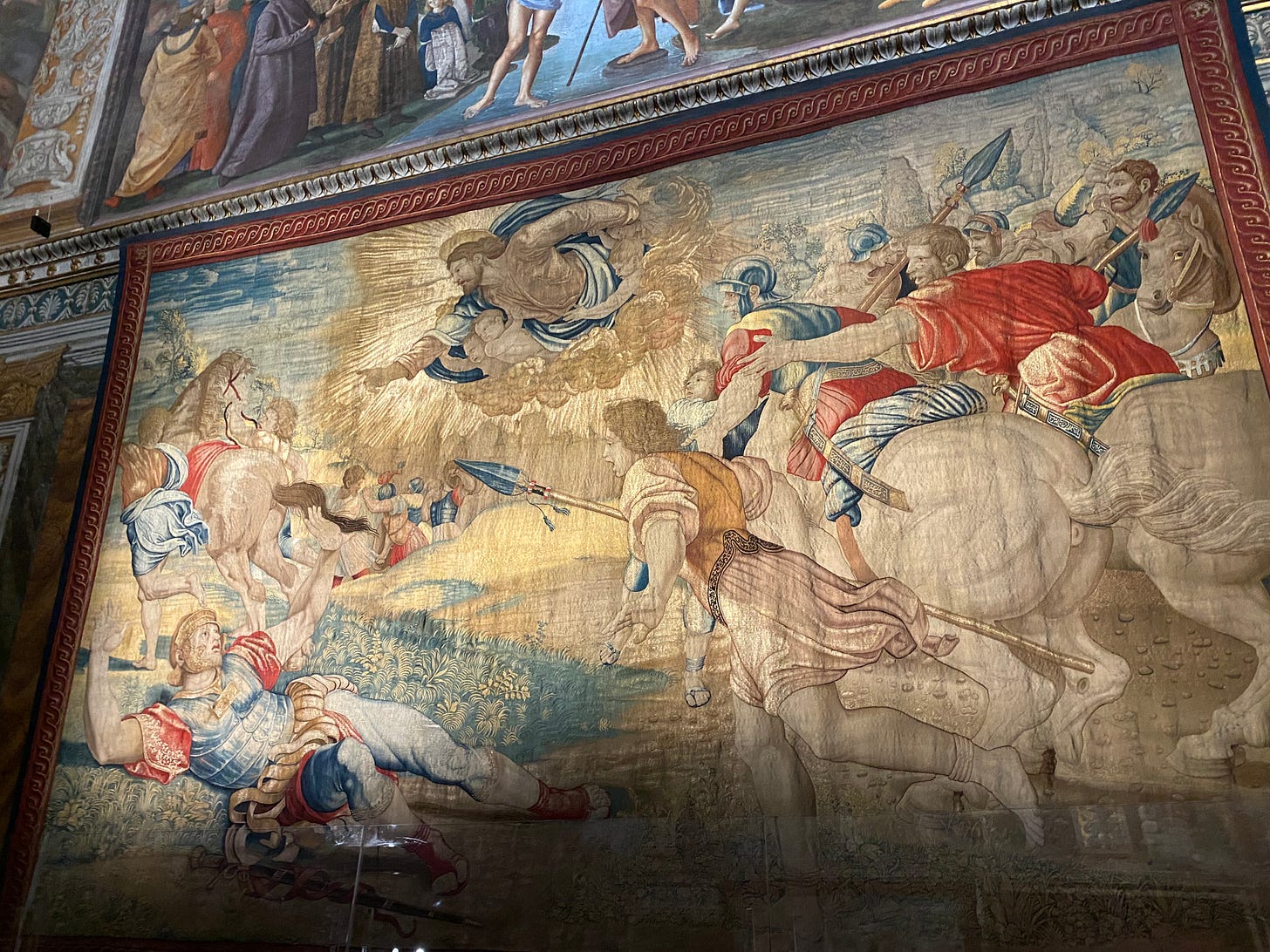
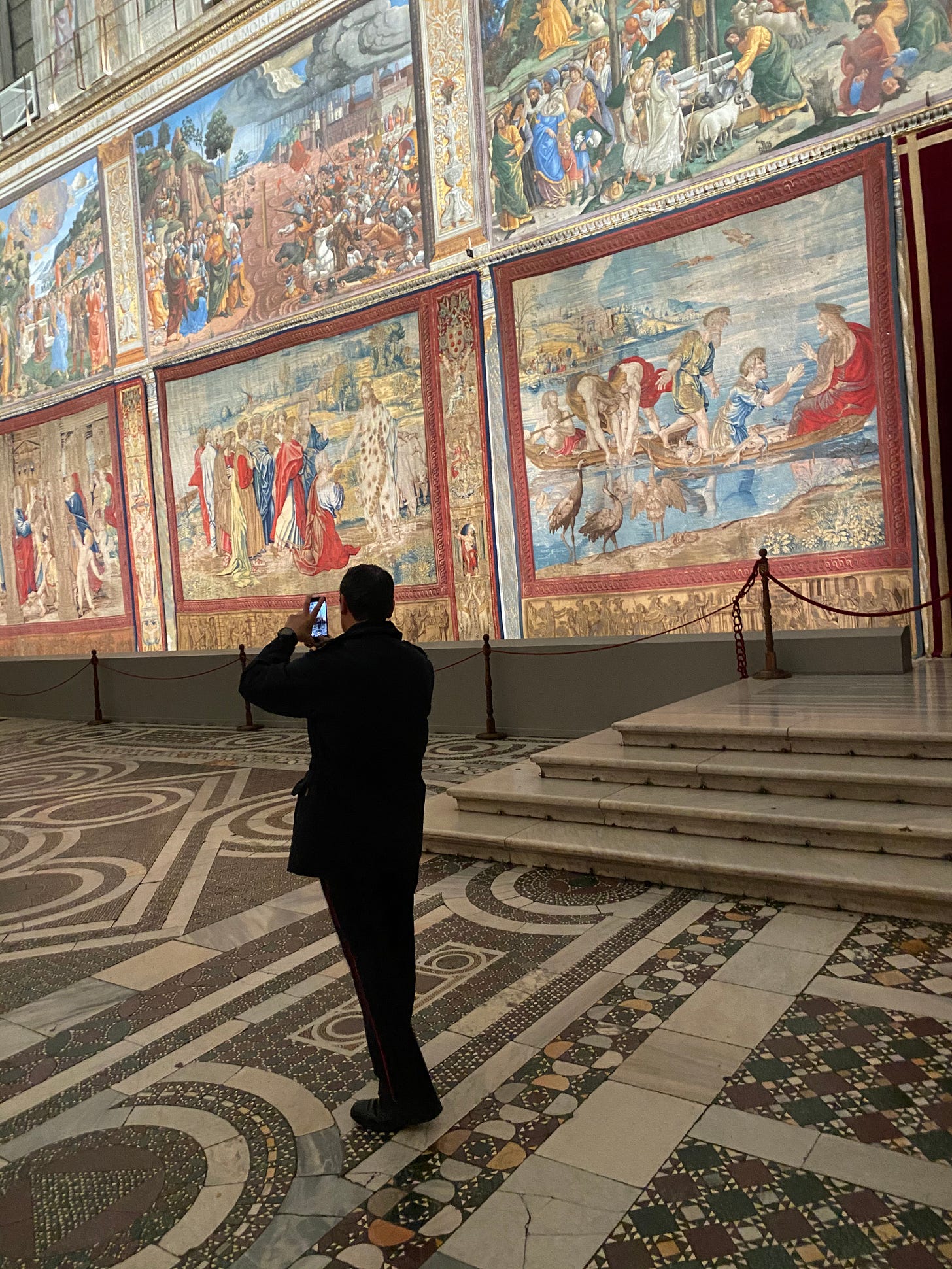
I am so happy that 1) you and I got to see these that strange February and 2) you went back and got to take pictures!
My strongest memory is how the room smelled and sounded so different with all of that gilded wool.
How wonderful to have seen these tapestries! The chance of a lifetime